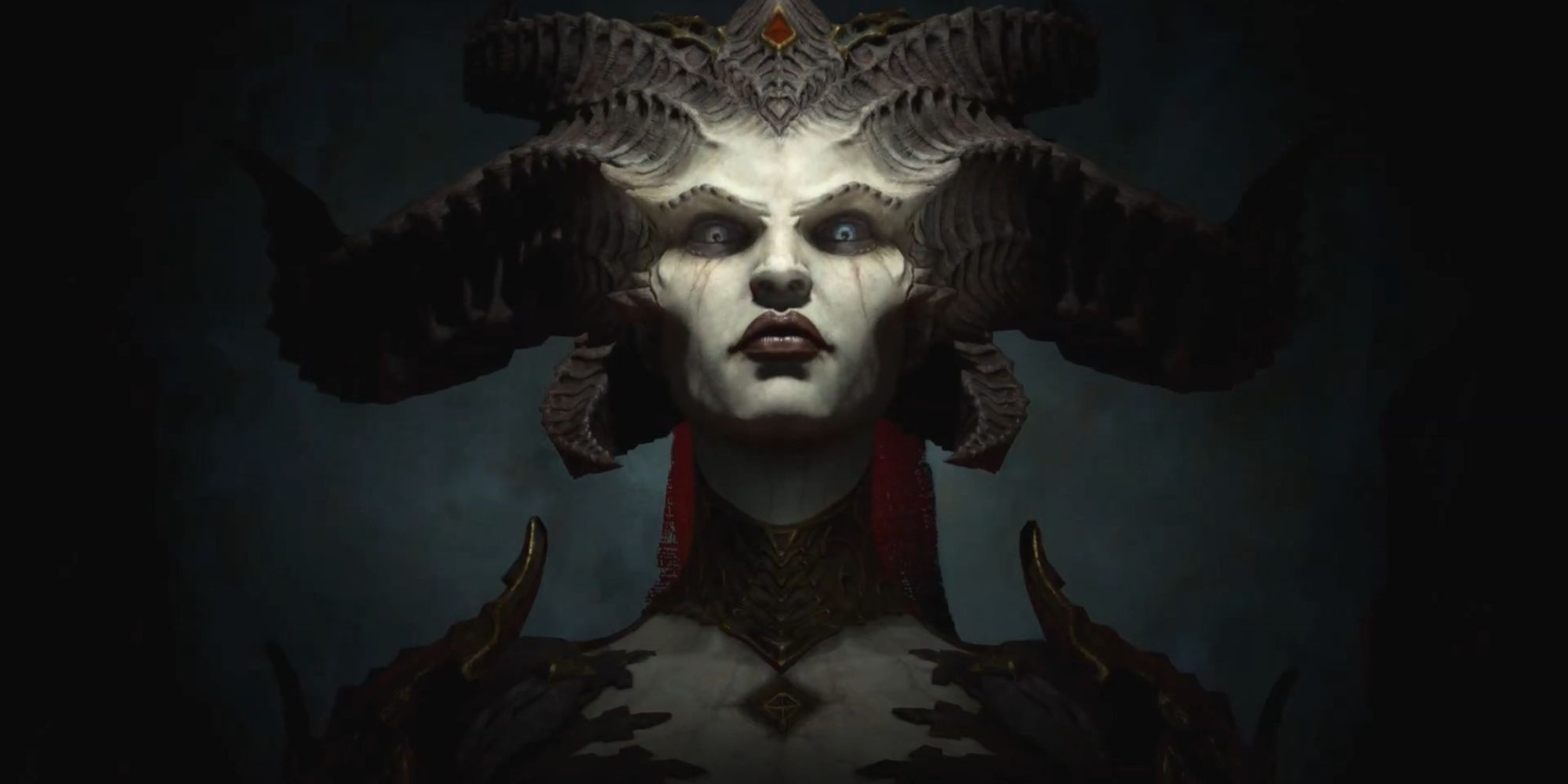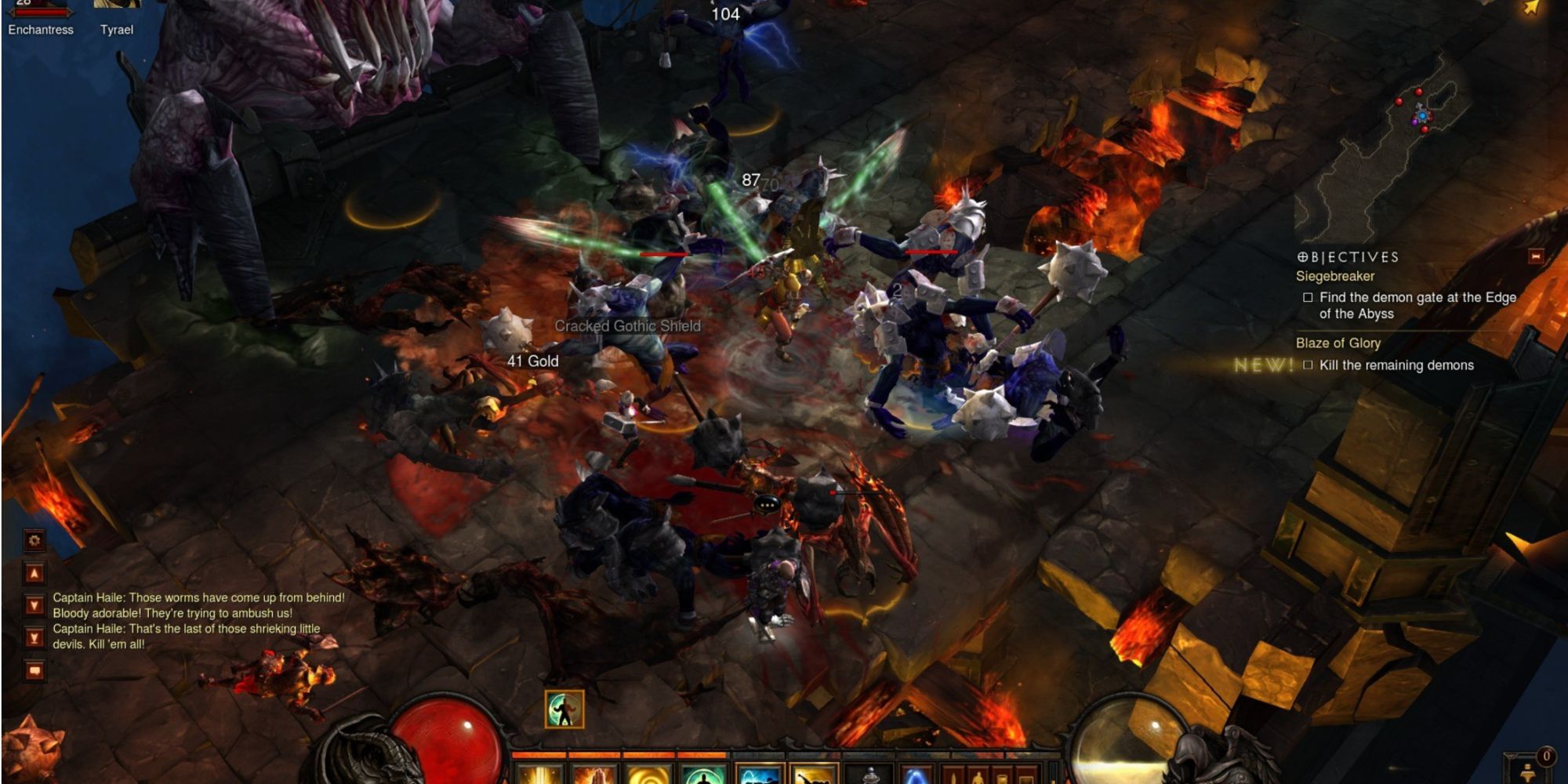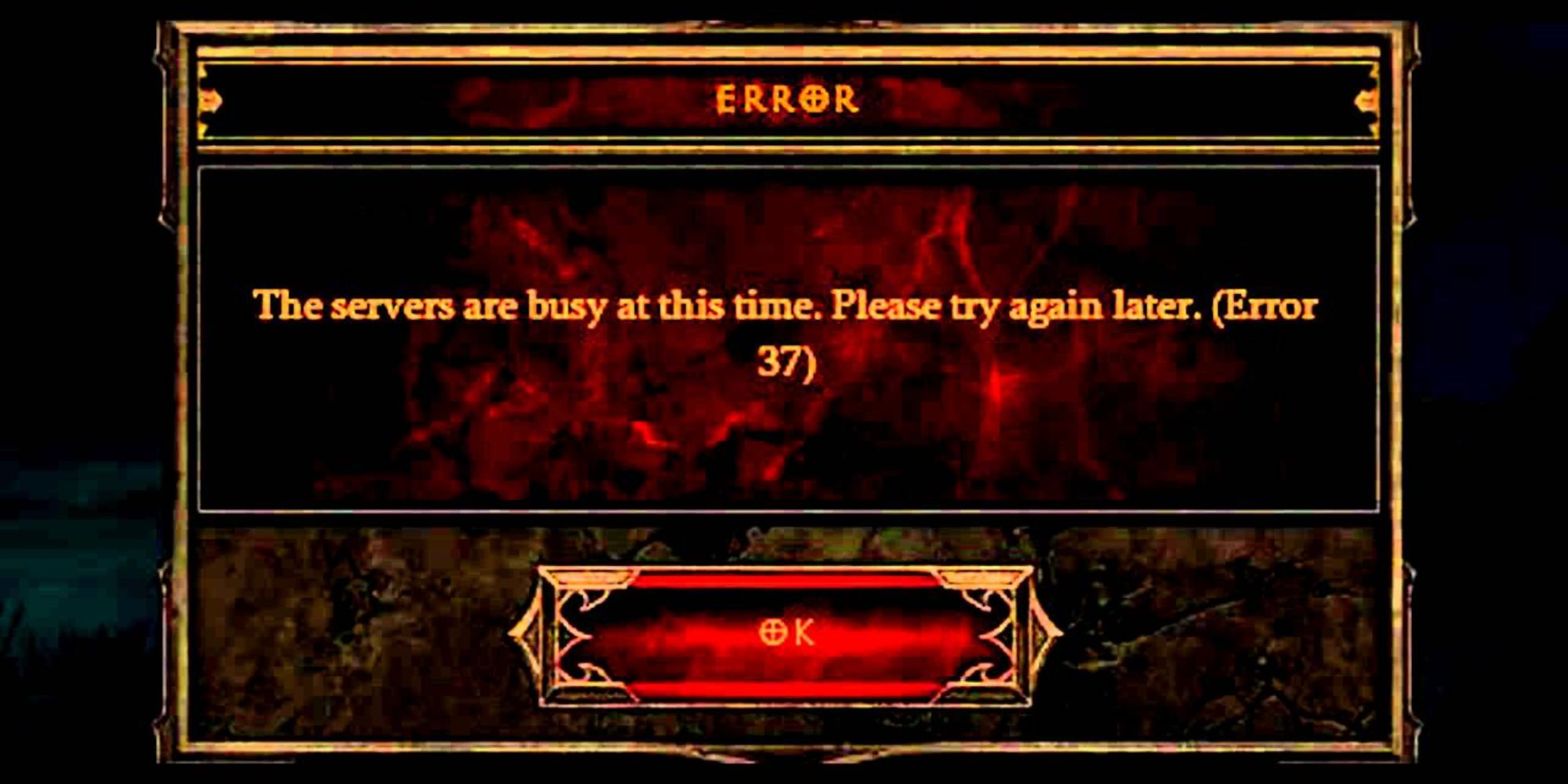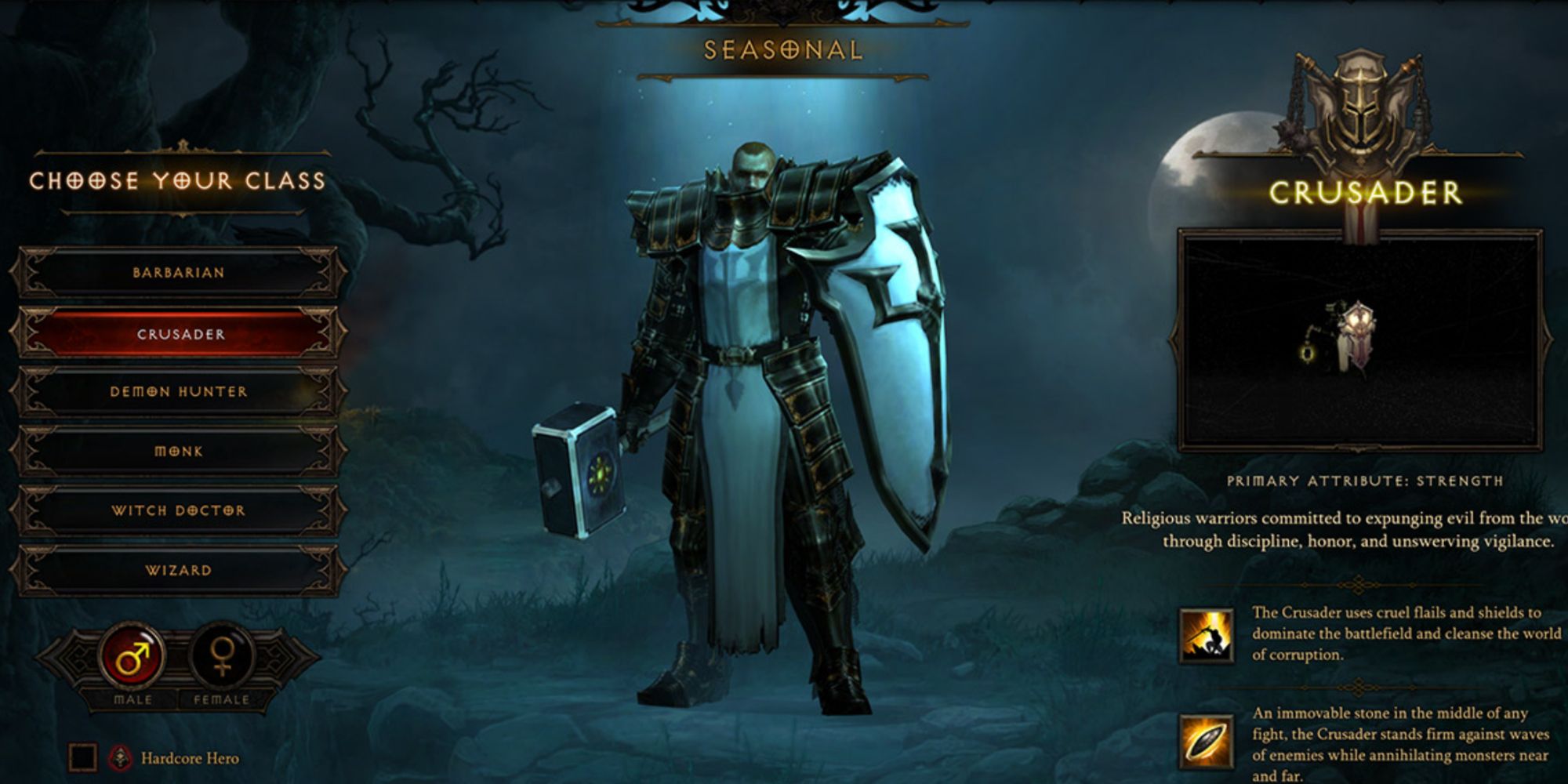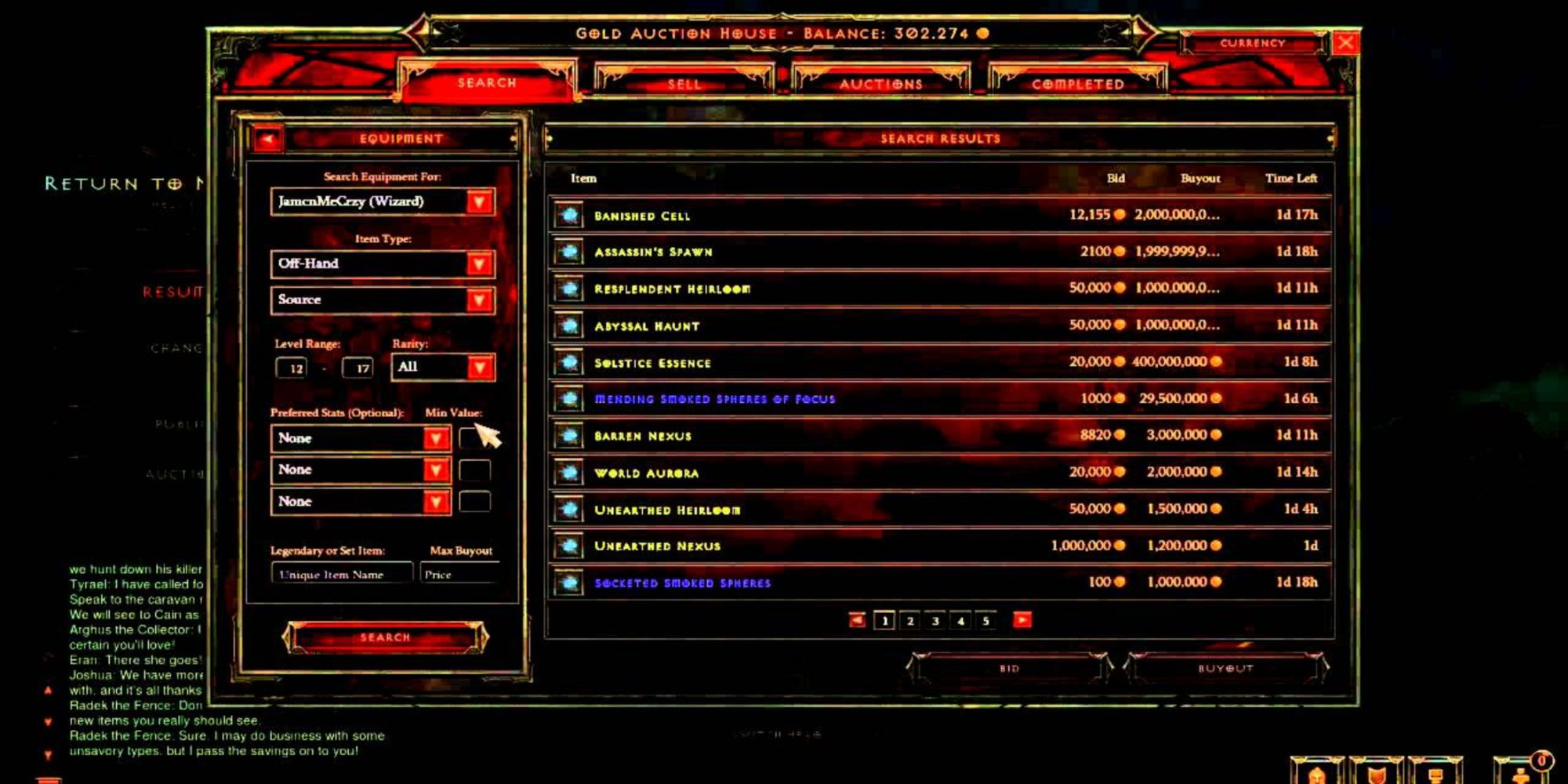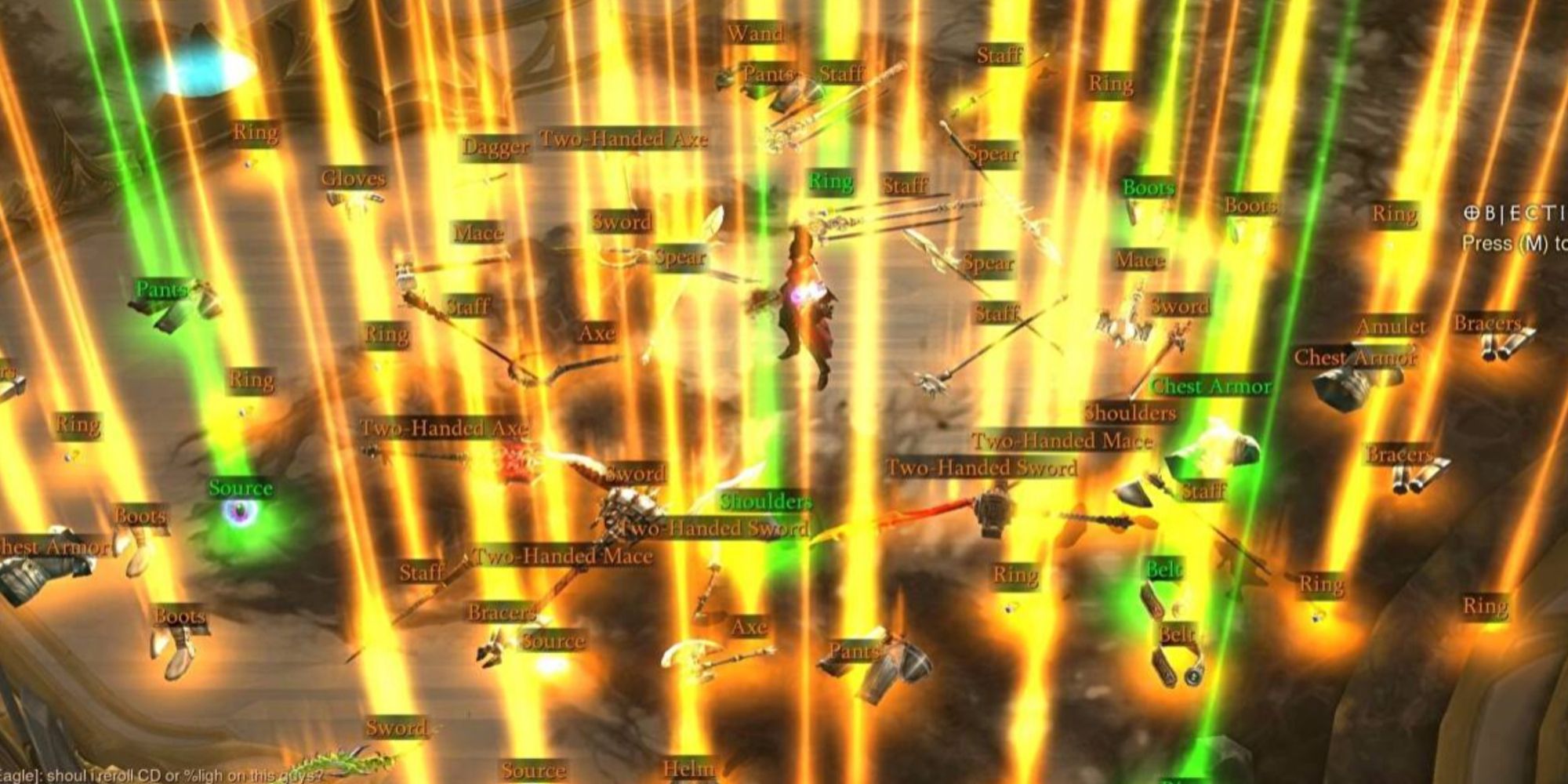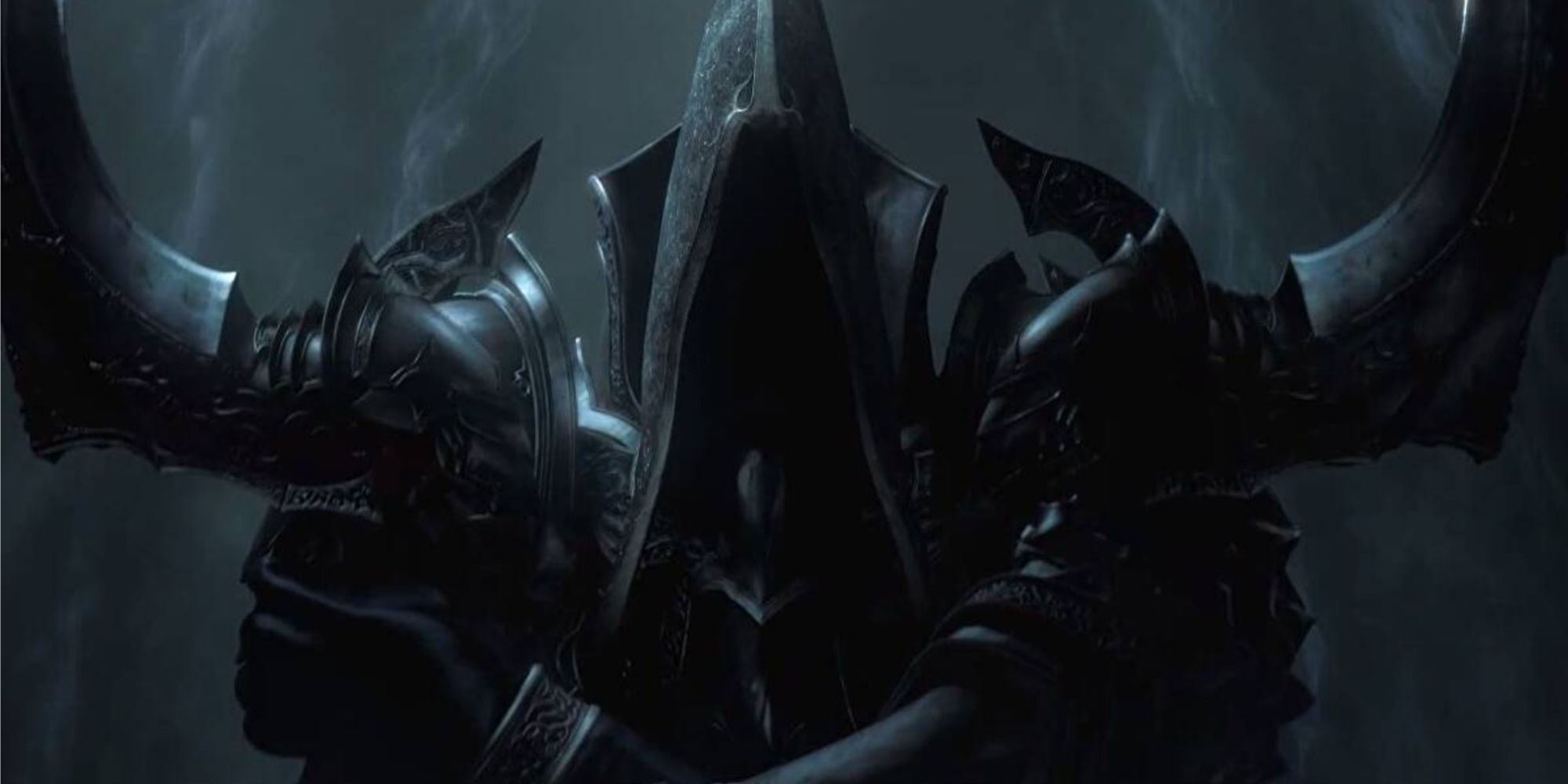The revitalization of Diablo 3 from where it started at launch over 10 years ago is astounding. The game's turnaround from its disastrous beginnings to being one of Blizzard's most beloved titles over the last decade rivals the best comeback stories in gaming history. It's right up there with No Man's Sky, and now Cyberpunk 2077.
With Diablo 4 now on the horizon, Blizzard is seeking to avoid another turbulent start to the next entry in this storied franchise. Given how Diablo: Immortal has been received, that is in no way a guarantee. Diablo 3 had a lot of smaller issues that will likely be ironed out just by the advancements in gaming hardware made since 2012. The game's major issues, however, began in the development process. Here are the biggest problems Diablo 3 had that Diablo 4 must avoid at all costs.
6 Underestimating Diablo's Popularity
By their own admission, the developers at Blizzard were conservative about just how popular Diablo 3 was going to be at launch. Their own estimates from their sales team had the game moving somewhere around 6.6 million copies in its first year. Instead, Diablo 3 hit those numbers in less than a week.
t's hard to say how many of its issues would have been avoided if the team were better prepared for the game's immediate success. Certainly, the server issues would have been more minimal, or at the very least the frustration felt by players would have been less widespread. Thankfully, this is an easy lesson to learn from, and it's unlikely Blizzard makes this same mistake again.
5 Error 37
The now legendary Error 37 crawled out of the muck right alongside Diablo 3's launch, becoming a meme while simultaneously frustrating thousands of players crazy. Its regular appearances prevented them from logging into — and therefore playing — Diablo 3. For many early adopters, trying to launch the game was met with this message: "The servers are busy at this time. Please try again later. (Error 37)."
The most frustrating part about this error message was how obtuse it was. It provides next to no information. What does "Error 37" mean? How busy are the servers, and why did that prevent players from logging in? How long did they need to wait before trying again? These questions simply hung in the air as more and more people were faced with the same message. It didn't take Blizzard that long to resolve the issue, but by then, it had been sent through the internet spin cycle and was circulating as a meme that doubled as a direct criticism of the game. Hopefully, with better sales projections helping them anticipate server populations, Blizzard can avoid such an issue with Diablo 4.
4 Always-Online
Part of what made Error 37 so frustrating was Blizzard's decision to make Diablo 3 an "always-online" game. Though the entire campaign could be played and completed solo, players had to have a steady internet connection and a BattleNet account to do so. For players faced with a steady stream of Error 37s, many wondered if being able to play the game offline would prevent overpopulated servers from blocking their access.
As of this writing, Blizzard seems committed to keeping Diablo 4 as an always-online game. While that may seem like bad news in this context, it should be noted that Diablo 3's online component became a boon rather than a burden as it began its comeback tour. The ability for players to constantly trade loot, team up on higher difficulties and in Adventure Mode, and examine each other's ever-changing builds was part of what helped sustain the game's success in its later years.
3 The Auction House
The Auction House, at a conceptual level, was a good idea. Diablo 2 had seen the rise of a flourishing black market as players were prepared to pay real money for the game's highest-quality and most powerful items. This allowed questionable third parties to swoop in, gather as much quality loot as they could, and sell it at absurdly high prices to unsuspecting adventurers. The idea behind The Auction House was that instead of those exchanges being run through a black market, Blizzard could build a better market and regulate it themselves. In doing so, they could eliminate fraud, scammers, and profiteering hackers.
There were two major issues with the implementation of this idea. Firstly, Blizzard allowed players to spend real money on loot and gold (an early example of microtransactions). They would take a cut of every transaction for themselves. This led to people accusing the developers of intentionally decreasing the quality of loot drops in orderto encourage players to buy their loot instead. Second, the Auction House made the hunt for in-game loot virtually inconsequential. No matter how good a piece of loot was, players could always find better loot at auction. This had a devastating effect on Diablo 3's endgame, eliminating the drive to hunt for loot.
Thankfully, Blizzard learned early on that the Auction House wasn't functioning as they'd hoped. They realized that it was breaking the primary gameplay loop of Diablo 3, and did away with both the real-money and gold Auction Houses, a decision which reportedly took them a mere 20 minutes to arrive at. The Auction House was removed alongside the release of the game's only expansion, Reaper of Souls, in 2014. It's unlikely that the concept will make a comeback in Diablo 4.
2 An Abundance Of Poor-Quality Loot
Part of what made the Auction House such a reliable go-to for the best loot was how difficult finding good loot in the game world was. Nearly every combat sequence would reward players with piles of loot, but rarely was any of it any good. More often than not, players would spend their time digging through their packed inventory, dropping or dismantling items that weren't as good as the ones they had equipped, only to set off with the exact same gear they'd had equipped before.
To make matters worse, finding high-end gear like a Legendary item was not only unlikely, it was nearly impossible. Even Diablo 3's game director, Josh Mosqueria, told a story years later about how he'd played his Barbarian character for over 100 hours before he ever found a Legendary item. And when he finally did, the item he found was a Quiver, which Barbarians can't equip. That moment (among many others reported by players) convinced the developers that the loot system wasn't working. They overhauled it and released the internally-titled "Loot 2.0" along with Reaper of Souls in 2014. The new system decreased the overall amount of items players received, but increased the average quality of each piece of loot, repairing the main appeal of setting out to kill monsters.
1 Endgame Content
As stated earlier, the combination of poor-quality loot drops and a bustling Auction House made the early version of Diablo 3's endgame pointless. If players could just buy themselves better loot, the only reason to go adventuring was to try out that loot. That enjoyment would last all of 20 minutes, hardly enough to sustain an always-online game for years.
With the game's first major update, Blizzard introduced Paragon Levels. This feature added stat benefits to pushing beyond the game's level cap of 60, and added an increase to the rate of gold and loot drop frequencies. Along with this came an increase in the drop rate for Legendary items, as well as some attributes for those items that would significantly change how each class played. The frequency at which those game-changing attributes would occur was increased with the release of Reaper of Souls. Additionally, there was the introduction of Adventure Mode, an endless-run game mode that saved players from having to constantly replay the main campaign. All these changes are now synonymous with Diablo 3. There's little reason to think Blizzard would do away with any of them, given how well they were received.
Diablo 4 is set to release sometime in 2023, and will be available on PS4, PS5, Xbox Series X/S, Xbox One, and PC.

